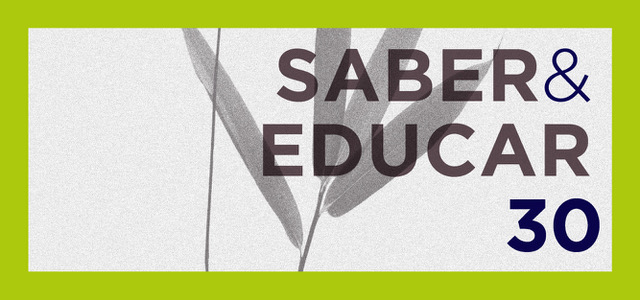Grooming online
prevenção, intervenção e respostas do setor educacional
DOI:
https://doi.org/10.25767/se.v30i.29480Palavras-chave:
Grooming online, Aliciamento sexual, Segurança onlineResumo
Este artigo visa chamar a atenção para o futuro da Educação da Infância em Portugal, por forma a refletirmos sobre os desafios impostos aos profissionais da área, no sentido de contribuírem para a prevenção de situações de risco ou perigo online junto das crianças. A Internet é uma ferramenta com elevado potencial e utilidade, que comporta riscos que não podem ser descurados, designadamente os que envolvem crianças e jovens. Devido às restrições impostas pela pandemia, várias escolas utilizaram como meio de comunicação a internet, tornando-se num desafio para as crianças, para os educadores e para os profissionais. Entre os vários crimes perpetrados online, encontram-se, crescentemente, os crimes sexuais contra crianças, como a produção e partilha de pornografia infantil ou o grooming (aliciamento) para fins sexuais.
Referências
Agulhas, R., Figueiredo, N., Alexandre, J., & Cifuentes, P. (2017). Vamos Prevenir! As Aventuras do Búzio e da Coral. Lisboa: Edições Sílabo.
Beech, A. R., Elliott, I. A., Birgden, A., & Findlater, D. (2008). The internet and child sexual offending: a criminological review. Aggression and Violent Behavior 13(3): 216-228.
Bebbington, P. E., Jonas, S., Brugha, T., Meltzer, H., Jenkins, R., Cooper, C., King, M., & McManus, S. (2011). Child sexual abuse reported by an English national sample: characteristics and demography. Social Psychiatry and Psychiatric Epidemiology 46: 255–262.
Bilmes D. (2011). The realities of sexting (you can't unsend!). Educator's guide to handling student sexting. School Library Journal 57(2), 54–55.
Brown, J. & Saied-Tessier, A. (2015) Preventing child sexual abuse: towards a national strategy for England. London: NSPCC.
Davidson, J., Martellozzo, E., & Lorenz, M. (2009). Evaluation of CEOP Thinkuknow internet safety programme and exploration of young people’s internet safety knowledge. Centre for Abuse & Trauma Studies. Kingston, UK.
Eaton, J. & Holmes, D. (2017). Working Effectively to Address Child Sexual Exploitation: An Evidence Scope. Research in Practice, Totnes.
Finkelhor, D. (2014). Commentary: Cause for alarm? Youth and Internet risk research — A commentary on Livingstone and Smith. Journal of Child Psychology and Psychiatry 55(6), 655–658.
Galheigo, S. M. (2008). Apontamentos para se pensar ações de prevenção à violência pelo Setor Saúde. Saúde & Sociedade,17, 3, 181-189.
Gupta, A., Kumaraguru, P., & Sureka, A. (2012). Characterizing pedophile conversations on the Internet using online grooming. Aditi Gupta.
Grazina, T. (2016). Vamos prevenir! As Aventuras do Búzio e da Coral: avaliação do impacto em crianças e respetivos cuidadores. Dissertação de Mestrado em Psicologia Comunitária e Proteção de Menores. Lisboa: ISCTE-IUL.
Katz, C. (2013). Internet-related child sexual abuse: What children tell us in their testimonies. Children and Youth Services Review 35, 1536–1542.
Kopecky, K., & Szotkowski, R. (2017). Cyberbullying, cyber aggression and their impact on the victim-The teacher. Telematics and Informatics, 34, 50-517.
Jones, L.M., Mitchell, K.J. & Walsh, W.A. (2014). A Systematic Review of Effective Youth Prevention Education: Implications for Internet Safety Education. Crimes Against Children Research Center (CCRC). University of New Hampshire, Durham.
Lanning, K. (2018). The evolution of grooming: concept and term. Journal of Interpersonal Violence, 33(1), 5-16.
Livingstone, S. (2010). E-Youth: (future) policy implications: reflections on online risk, harm and vulnerability. UCSIA & MIOS University of Antwerp, Antwerp, Belgium.
McElvaney, R. (2019). Grooming: A Case Study. Journal of Child Sexual Abuse, 28(5), 608-627.
Moita, M. (2016). Avaliação de Impacto do Jogo “Vamos Prevenir! As Aventuras do Búzio e da Coral”: jogo de prevenção primária do abuso sexual para crianças entre os 6 e os 10 anos”. Dissertação de Mestrado em Psicologia Comunitária e Proteção de Menores. Lisboa: ISCTEIUL.
Olson, L. N., Daggs, J. L., Ellevold, B. L., & Rogers, T. K. K. (2007). Entrapping the Innocent: Toward a Theory of Child Sexual Predators? Luring Communication. Communication Theory, 17(3), 231–251.
Palmer, T., Von Weiler, J., & Loof, L. (2010). The impact of internet abuse on children and how best to intervene. The Official Newsletter of the International Society for Prevention of Child Abuse and Neglect, 19. USA.
Radford, L., D. Allnock & P. Hynes (2015). Promising Programmes to Prevent and Respond to Child Sexual Abuse and Exploitation. UNICEF.
Livingstone, S. & Palmer, T. (2012) Identifying vulnerable children online and what strategies can help them. UK Safer Internet Centre, London, UK.
Walsh, K., Zwi, S., Woolfenden, S. & Shlonsky, A. (2015). School-Based Education Programs for the Prevention of Child Sexual Abuse: A Cochrane Systematic Review and Meta-Analysis. London: The Cochrane Collaboration.
Whittle, H.C., Hamilton-Giachritsis, C.E. & Beech, A.R. “Under His Spell”: Victims’ Perspectives of Being Groomed Online. Social Sciences. 2014; 3(3):404-426.
Wurtele, S., & Miller-Perrin, C. (1992). Preventing child sexual abuse: Sharing the responsibility. Lincoln, NE: University of Nebraska Press.
Whittle, H., Hamilton-Giachritsis, C., Beech, A., & Collings, G. (2013). A review of young people's vulnerabilities to online grooming. Aggression and Violent Behavior, 18(1), 135-146.
Wolak, J., Finkelhor, D., Mitchell, K. J., & Ybarra, M. L. (2008). Online “predators” and their victims: myths, realities and implications for prevention and treatment. American Psychologist, 63, 111-1128.
Wurtele, S. K. (2009). Preventing Sexual Abuse of Children in the Twenty-first Century: Preparing for Challenges and Opportunities. Journal of Child Sexual Abuse, 18(1).
Wurtele, S., K. & Kenny, M. (2017). Technology-Related Sexual Solicitation of Adolescents: A Review of Prevention Efforts. Child Abuse Review, 25, 332–344.
Publicado
Como Citar
Edição
Secção
Licença

Este trabalho encontra-se publicado com a Licença Internacional Creative Commons Atribuição-NãoComercial-SemDerivações 4.0.
Os autores mantêm os direitos de autor e concedem à Saber & Educar o direito de primeira publicação, com o trabalho simultaneamente licenciado sob a Licença Creative Commons Attribution 4.0 International (CC BY 4.0) que permite que outros partilhem, adaptem e redistribuam o trabalhopara qualquer finalidade, inclusive comercial, desde que seja dado o devido crédito à autoria e à publicação inicial nesta revista.
A revista reserva o direito de efetuar, nos originais, alterações de ordem normativa, ortográfica e gramatical, com vista a manter o padrão culto da língua, respeitando, porém, o estilo dos autores.
As opiniões emitidas pelos autores dos artigos são da sua exclusiva responsabilidade.
A submissão de artigos a esta revista não contempla qualquer pagamento ou taxa.
Autores têm permissão e são estimulados a publicar e distribuir o seu trabalho online (por exemplo, em repositórios institucionais ou páginas pessoais),pois isso pode aumentar o impacto e a citação do trabalho publicado (Ver O Efeito do Acesso Livre).
Os nomes e endereços fornecidos nesta revista serão usados exclusivamente para os serviços prestados por esta publicação, não sendo divulgados para outras finalidades ou a terceiros.
Legislação aplicável: Política de Proteção de Dados






